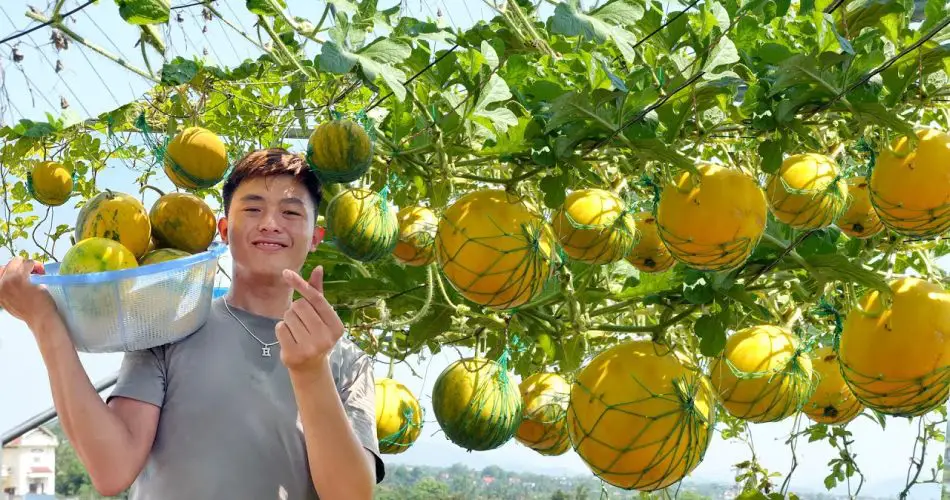Growing yellow watermelons at home can be a delightful experience, and there are several secrets to achieving big, super sweet fruits. Here’s a guide to help you succeed in growing delicious yellow watermelons:
Materials Needed:
- Yellow watermelon seeds
- High-quality potting mix or well-draining garden soil
- Large containers or garden bed
- Organic fertilizer
- Watering can or hose
- Support structures (optional)
- Full-sun location
- Mulch (optional)
Steps:
- Selecting Yellow Watermelon Seeds:
- Choose a yellow watermelon variety suited for your growing region. Varieties like ‘Yellow Doll’ or ‘Yellow Baby’ are popular choices.
- Choosing Container or Garden Bed:
- Yellow watermelons can be grown in containers or garden beds. Ensure that the chosen container or bed has good drainage.
- Preparing Soil:
- Use high-quality potting mix for containers or amend garden soil with well-rotted compost to improve fertility and drainage.
- Planting Seeds:
- Plant yellow watermelon seeds directly into the soil or containers. Follow the recommended planting depth on the seed packet.
- Fertilizing:
- Mix organic fertilizer into the soil before planting. Yellow watermelons benefit from a balanced fertilizer with a slightly higher phosphorus content during the flowering and fruiting stages.
- Watering:
- Keep the soil consistently moist, especially during hot periods. Water deeply and regularly, ensuring that the soil doesn’t dry out completely between waterings.
- Mulching (Optional):
- Apply a layer of organic mulch around the base of the watermelon plants to retain moisture, suppress weeds, and regulate soil temperature.
- Support Structures (Optional):
- Consider providing support structures like trellises or cages, especially if you are growing in containers. This can help save space and prevent the vines from sprawling.
- Sunlight:
- Yellow watermelons, like their red counterparts, require full sun. Place the containers or garden bed in a location that receives at least 6-8 hours of direct sunlight per day.
- Thinning Fruits:
- Once the yellow watermelon fruits start forming, consider thinning them to one or two per vine. This allows the remaining fruits to grow larger and ensures a better quality harvest.
- Pruning (Optional):
- While watermelons generally don’t require heavy pruning, you can trim back excessive foliage to improve air circulation and sunlight exposure to the fruits.
- Harvesting:
- Harvest yellow watermelons when the underside turns creamy yellow, and the fruit has a sweet aroma. The tendril near the stem should be brown and dried. Gently twist the fruit to harvest.
- Pest and Disease Management:
- Keep an eye out for common pests and diseases. Use organic methods or appropriate remedies to address issues promptly.
By following these steps and paying attention to the needs of yellow watermelons, you can cultivate big, super sweet fruits at home. Enjoy the unique and refreshing taste of homegrown yellow watermelons in your garden.
Show Comments



